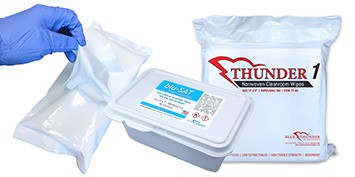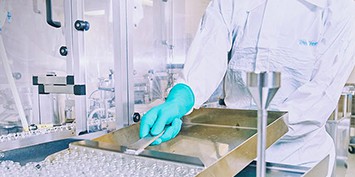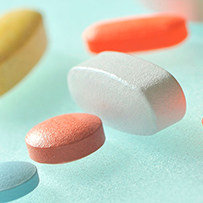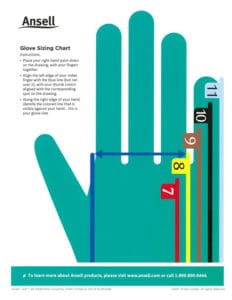How To Measure Glove Size: Learning About Cleanroom Glove Length
When it comes the glove length, size matters in the cleanroom. Gloves are critical for your safety and they protect the product you’re handling. They are a critical tool for contamination control and are essential for environments that must guarantee sterility.
Accurate contact and dexterity are real measures of a gloves’ worthiness, so good fit and proper materials are essential. If you are allergic to latex, you’ll need to find a good substitute. Here’s how to measure glove size and choose the correct substrate for your cleanroom gloves.
Why Cleanroom Glove Length is Important
Increased awareness and the need for additional personal and product protection have resulted in cleanroom gloves with a longer cuff length.
Wearing gloves that are longer than the traditional length of 300mm/12 inches (12’’) eliminates the need for additional protective items such as sleeve-covers or the use of cuff tape. This cuts costs and reduces consumable waste, resulting in a positive impact on the environment.
Go Long for Extra Protection
The standard cleanroom glove length is 12 inches (12’’). Selecting a glove that is 400mm/16” in length ensures the entire forearm to protected up to the elbow. This also reduces the risk of exposure to harmful chemicals.
When handling hazardous chemicals, such as chemotherapy drugs, the wearer should have the increased protection and reassurance from a glove that is the ample length.
How to Measure Glove Size
There are two steps to measuring your glove size: the glove itself and the cuff length. To measure the glove size, you’ll need a way to measure around your palm. A soft tape measure works well, or a length of string or fabric that you have measured beforehand.
Measure around your hand without the thumb. This measurement indicates glove size according to a men’s or women’s sizing chart.
The men’s chart ranges from 7″ – 12″ in half-inch increments, from extra small (XS) to extra extra large. The grading is XS at 7″, SM is 7.5″ – 8″, and so on. The women’s chart ranges from 5.5″ – 9″, XS to XL. Anything larger goes to a men’s glove.
Glove Sizing Chart
Download in PDF format
Measuring Cuff Length
To calculate your cuff length, measure the distance from the tip of your middle finger to where the cuff edge needs to be on your forearm. The standard cuff length is 12″. For more hazardous material handling, the glove length is up to 16″.
Cleanroom Glove Substrates
Cleanroom gloves are available in a variety of materials. The proper glove material will be determined based a variety of factors. The type of product or chemicals that the glove will meet and the specific cleanroom in which it will be used are both important factors. Alternative materials are also available for individuals with latex or nitrile allergies. Here are four popular glove materials and their protective and cleanliness properties:
- Natural Rubber Latex
Latex is the most commonly used material for gloves because it is durable, comfortable, and allows for excellent dexterity. Made from organic tree saps, it protects well against ketones, different types of alcohol, and acids. Some people are allergic to the proteins in latex and must use an alternative glove material.
- Nitrile (Acrylonitrile Butadiene Rubber)
Nitrile is the allergen-free alternative to natural latex and offers protection from more substances as well. These gloves can reduce fatigue because of a snugger fit than latex. They are resistant to punctures, scrapes, and cuts, and are anti-static.
- Polyvinylchloride (PVC)
This inexpensive material is naturally low in particulates and works well in dry controlled environments. These gloves don’t have the tight fit of late or nitrile gloves, so they offer less dexterity than the others.
- Neoprene
Ideal for individuals with sensitivities to latex and nitrile, neoprene gloves provide enhanced protection against a variety of chemicals. They have better puncture resistance than latex.
Choose Wisely
In addition to ensuring that your gloves fit well, you need to make sure you follow cleanroom standards for the glove’s material. Cleanroom particulates change over time, and you need to check that you and the substances that you handle are protected.
Now that you know how to measure glove size, check out our selection of cleanroom gloves the next time you need to purchase them. We offer three materials in three ISO classes, and gloves suitable for controlled environments from aerospace to pharmaceutical applications. We can help make sure you get the correct gloves for the job.












